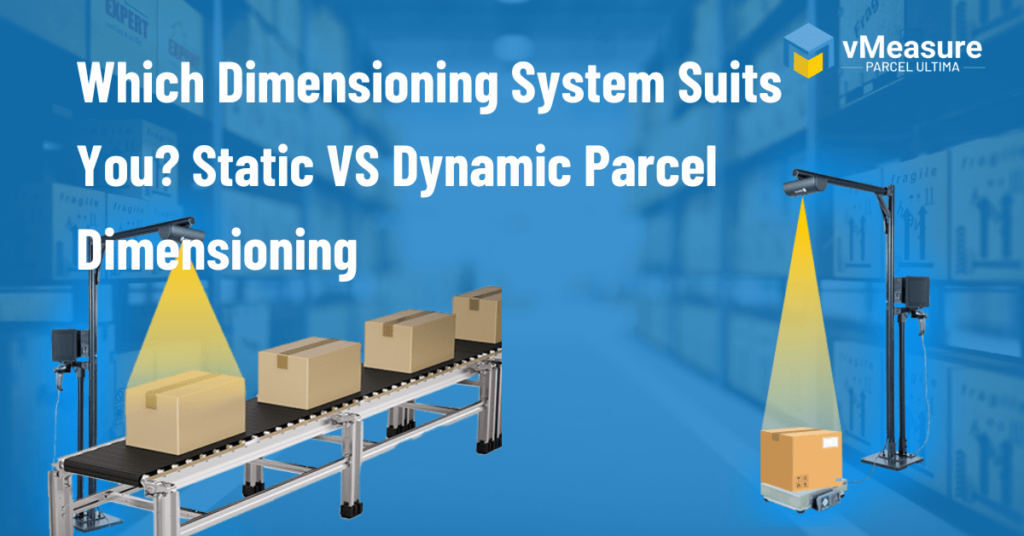Table of Contents
Summary
- The evolution of eCommerce has been skyrocketing in recent times.
- Individuals get more attracted to the services, resulting in a vast order request wave to the warehouse industry.
- An overflow of online orders requires warehouses and logistics networks to maximize efficiency.
- We can ease iterative hand-operated work by introducing warehouse automation.
- The following article explains why warehouse labor statistics suggest that dimension machines are lifesavers.
Adopting the automation trend in the warehouse and logistics industry
According to neoteric statistics, over 15% of warehouses use automation technology to accomplish various iterative human-held tasks. Based on the operational paradigm, the warehouse proprietors split automation into three levels (system, mechanized, and Sophisticated).
The system automation incorporates a warehouse management system (WMS) with a radiofrequency (RF) device, Pick-to-light, or Voice-picking. Adopting the automation trend in the warehouse and logistics industry, mechanized automation includes Conveyors, automated storage (AS), and retrieval systems (RS). Sophisticated automation contains automated guided vehicles, sorters, robotic picking, and palletizers.
Why has warehouse automation been booming recently?
a. Increased labor and space outlay
When the vertical expands, the need for labor and room space becomes an essential phase. As eCommerce grows, new warehouse associates are employed to handle various tasks, such as tracking in-house products, extracting the list of delivered products, traversing the location of the products using barcode scanners, etc. All these sorts of operations are pretty iterative and intricate.
Throughout the upcoming year, warehouses’ growth will be tremendous; eCommerce will continue to surge, resulting in a massive demand for storage rooms. In this scenario, the warehouse owners feel frustrated when they are forced to spend more on rent.
b. Demand for online orders exceeds capacity
The flood of onstream order requests pushes warehouse and logistics providers into a fast-delivery race. A higher frequency of orders made it impossible for most warehouses and distribution centers to handle most operations using traditional methods. Shipping and delivery are also relatively complex due to the customer’s expectation of same-day or one-day delivery. A technology-enabled warehouse and logistics center would reduce its complex operations and increase its vertical potency.
c. Increasing consumer expectations
Customer expectation is what keeps overflowing orders in the eCommerce sector. Therefore, streamlining the smooth order transition is the most prominent role warehouse should seriously consider. Some typical consumer expectations include providing reliable product information, fast deliveries, price, quality, and convenience. Therefore, the warehouses and distribution centers should establish automation technology to fulfill customer needs.
How does the rising e-commerce influence your warehouse’s ability to meet customer expectations?
Online orders have been abundant in 2020, making it a prolific year for the eCommerce sectors. Warehouse proprietors face overwhelming customer expectations due to the rapid growth of digital technologies. Futurists predict warehouse automation will become the norm among eCommerce sectors in the near future. Upon maturity of the business, the warehouse technology can be updated or integrated.
Here are two tips for ensuring your warehouse meets high customer expectations:
1. Fix your warehouse automation level
As the warehouse faces a torrent of order requests every day, the level of the work cycle explodes drastically. A warehouse employee cannot handle this situation, as they need to maintain the stock reports for their company, track fast-moving products based on the order request and forecast reports, and ensure customer satisfaction. Using traditional warehouse methodologies will ruin most of the process and result in incorrect product information, unnecessary transport charges, etc. By choosing the correct automation based on the process’s complexity, we can quickly reduce time lags and human blunders. But before that, we need to understand the level of automation that has to be implemented in the vertical.
2. Building a scalable solution to your vertical
After estimating the warehouses’ automation level, the next step is to get the right fit automation for your working ecosystem. Then, as the industry matures, we must define and build the required technology in the workspace per the employees’ prerequisites.
Benefits of adopting automation technology to the warehouses:
- Consumes time and money: The term “time” and “money” are the two fundamentals of the warehouse vertical. With automation technology, we can disengage the warehouse’s redundancy operations, which bolsters increased productivity.
- Minimizes human errors: Inexact information will always be a massive headache for customers and business proprietors. For example, with imprecise package information, you tend to pay pointless delivery charges; with the righteous automation technology, you can effortlessly vanish the conveyance fee and rocket the market value.
- Maximizes the room space: Space is the most paramount resource in the warehouse. Organizing the warehouse space can do wonders, and the warehouse automation supports ensuring the available room space for upcoming endeavors
- Seamlessly manage inventory data: Overseeing the inventory could be more challenging. The precision of inventory is calculated by dividing the number of counted items that perfectly match every aspect of the record by the total number of objects counted.
In what ways does warehouse automation make a difference?
Warehouse automation has become an increasingly impressive alternative that can pave the way for various functions such as overseeing the space, diminishing the building cost, lessening the operational expenses, and improving the warehouse potency. However, there lie two fundamental motivations for automating the warehouse such as:
- The goods-movement process: By deploying a solution that helps move the products from one point A to another point B.
- The decision-making process: Allowing the technology to make decisions and perform operations dependent on the warehouse circumstance.
New trends in automation technology
According to the statistics, Just 15 percent of warehouses reported using sophisticated automation in 2020. Organizations of all sizes have already embraced automation in their business verticals. But to make it more agile and lean, we need to train them with monstrous datasets. For instance, clarifying the decision made by deep learning or machine learning algorithms is technically very challenging, particularly for real-time use cases.
To ensure seamless operations in your warehouse, here are some new technologies you can invest in:
#a. Autonomous mobile robots (AMR)
AMR is a smart technology that can move and perform various operations within the warehouse environment without human supervision. These robots use maps and sensors to navigate and analyze the warehouse floor’s obstacles. Additionally, the AMRs can perform order fulfillment operations like transporting material goods, bolstering the warehouse associate to complete the tasks, etc.
Below are some of the tips to guide the inventory system in the warehouse:
- Reduces the walking time
- Directs the workflow to amplify precision and potency in the workspace
- Lessens the everyday human tasks
#b. Autonomous Guided Vehicles (AGV)
The AGV deployed in the warehouse to move products from one place to another, pick and pack orders operations. These vehicles can be a suitable replacement for the traditional picking procedure. There are three main types of AGV such as tugger, unit load, and forklift.
Here are some benefits of Autonomous Guided Vehicles:
- Heightens the warehouse’s efficiency and productivity
- Obtains less space
- Improved safety and flexibility
#c. Dimension machine
According to the current pool, industries with organized order rates of 85 percent or higher are three times more profitable than those with perfect order rates of 60 percent. Inaccurate measurements are the standard issue in the warehouse. Unnecessary charges have always been a massive pitfall during shipping the products to the warehouse, which ends in paying an additional amount during the delivery. Warehouses deploy dimension machines to calibrate packages’ dimensions. These dimension machines come in two different types, such as package and parcel dimension machines. The package dimension machine assists in calibrating the dimensional info of huge pallets of varied sizes. The parcel dimension machines help estimate the dimensional data of packages such as cubes, cuboids, polybags, and any other irregular shapes in less than a second. Without the benefit, no organization would invest in automation.
Here are the benefits of using a dimension machine in the warehouse:
- Pickup warehouse potency: Conventional dimensioning practices are too time-consuming, resulting in unnecessary freight fees. In addition, a late delivery would cause a different type of headache, damaging the company’s excellent reputation. With the appropriate dimension machine, we can speedily boost warehouse potency.
- Increased dimensional calibrations: Ever wondered why warehouse firms choose dimensioners? It’s because a suitable dimension machine can generate more money! In addition, an improved dimensional calibration can hastily speed up the work cycle, heightening the workflow.
- Lessens the dimensional miscalculation: Most warehouses still follow the traditional dimensioning approach, where the warehouse associate uses tape and a ruler to calculate the length, height, and width, and then calculate the parcel’s weight; that is a hectic task and sometimes causes errors in the dimensional calculation. We need to deploy a dimension machine to reduce manual dimensioning to eliminate these hand-held methods.
- Assists in space and storage: Space and storage are the two fundamental considerations of the warehouse. The warehouse also works hard to ensure the space during seasonal times. By organizing the area in the warehouse, we can leverage dimension machines to store more products for future preparedness.
Conclusion
There is no magic way to build an effective warehouse, but we can fasten productivity by enhancing the right equipment. Centering this fact, the warehouse is now opting for the automated dimension solution as the first-step automation phase. These technologies may evolve to face a significant change in the coming days, and this all starts for the warehouse!





